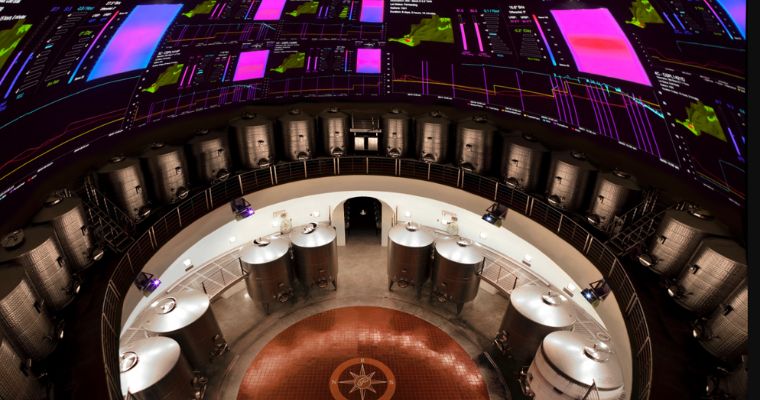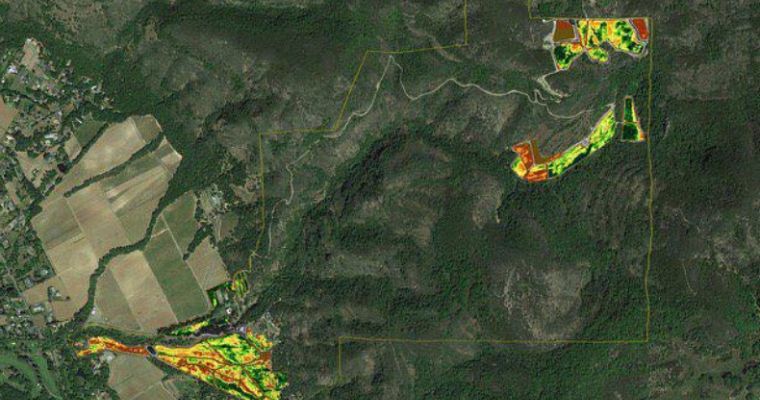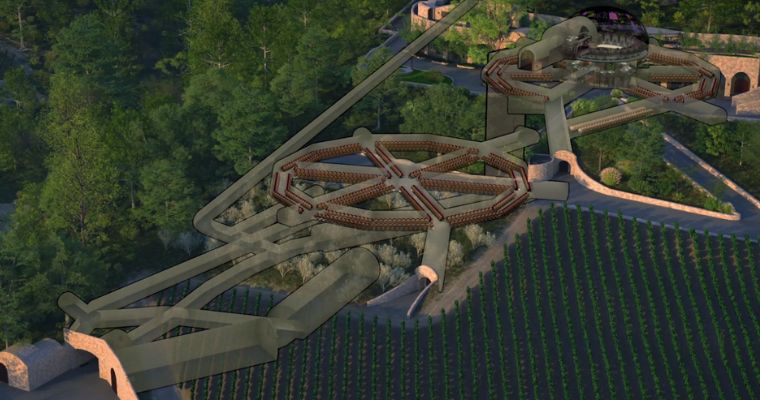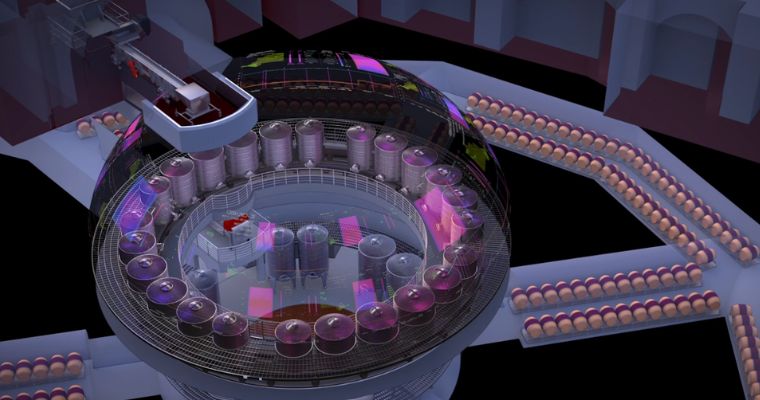Winner Announcement
June 10, 2025
Judging Date
May 18, 2026
Registration Opens
August 1, 2025

The complexity of life's problems has led to an increase in interest in data analytics and its potential applications in numerous industries. Big data has recently begun to gain popularity in the fields of agriculture and viticulture, despite the fact that the use of analytics is already well established in several sectors, including banking and healthcare.
Although many wineries have utilized analytics in their sales and marketing departments for a while, many are now understanding the advantages of using advanced analytics and AI while making important decisions to expand their operations.
Winemaking is an industry where the quality of the product is extremely reliant on the quality of its core fruit because even a small change in the moisture level can have a huge impact on the wine. Furthermore, most of the regions that are good for cultivating grapes are prone to drought and heat spells, making it necessary to maintain the ideal moisture levels. And this is one of the main reasons why farmers are taking help from data analytics to address some of these problems.
Today, wineries are using IoT sensors to track the level of moisture in the soil and make better decisions on when and where to water the vines. Cultivators can easily decrease waste and boost operational efficiencies by using water levels that are necessary for the conditions of the soil and climate. Vineyards are also applying data analytics to improve their irrigation system as it helps them to minimize the time required for sampling, resolving malfunctions, and alerting any issues even before they are visible in the crop.

Image Source- Palmaz Vineyard
Vineyards are large, and it can be challenging for the winemakers to monitor and scout the entire field. For winegrowers, manually examining these large acres of vines can be extremely time-consuming and it takes away valuable time, which they can spend on more productive activities.
To address this, winemakers have begun implementing precision farming techniques. Toda,y farmers can create interactive maps that will help them to check the health of their field and track information like vegetative development, humidity, soil temperature, and photosynthetic activity due to aerial imagery acquired by satellites, drones, and airplanes. Farmers can also detect and address any problems related to the vineyards timely. Innovation in artificial intelligence is also helping to compare data with the vineyard's health history so that they can address the issues of the identified problem.
Every farmer has to deal with pests and diseases, regardless of the type of plant they cultivate or the location in which they do it. A single disease outbreak can wipe out an entire harvest, and there is a limitless variety of bugs and other creatures that would be delighted to taste your product for you. However, improper use of pesticides and other chemicals can have harmful impacts on your vineyard. Fortunately, advancements in data analytics are making it possible for winemakers to take the necessary steps to safeguard and treat their crops. Preventing pests and diseases from spreading may be the best method to deal with them.
Some vineyards utilize IoT sensors and artificial intelligence to identify the kinds and quantities of insects that are near their crops, which helps them identify the possible dangers. Other vineyards measure different parameters like temperature and humidity using data analytics to calculate the chance of infection on an hourly basis. Even with precautionary measures, it is inevitable that an outbreak will occur occasionally but data analytics tools are assisting winegrowers in deciding what kind, how much, and when to use a pesticide in the event of a pest infestation. This minimizes waste generation and associated environmental risks. To implement the appropriate countermeasures, vineyards are using data tools to monitor for signs of infection and forecast the progression of the disease.

Image Source- Palmaz Winery
Agriculture and winemaking are likely the two industries that rely on the climate of the region. The success of a vineyard relies on its capacity to organize operations in accordance with reliable weather forecasts. Even a little change in the quality of fruit can impact the wine due to which it is necessary to get an ideal growing condition. The connection between weather and winemaking has led to a rise in the use of data analytics for precise weather forecasting.
To offer winegrowers improved risk-management options, researchers are using satellites to track crucial data including atmospheric patterns, precipitation, and ocean currents. Winegrowers can also estimate growth stages based on present weather conditions due to the Growing Degree Days (GDD) calculation, which uses temperature observations.
The foundation of any good vine is healthy soil. Winegrowers can take into account differences in productivity within the vineyard and create a strategy in response by comprehending and tracking soil data such as available nutrients, pH, and moisture levels. Making informed decisions regarding land management and knowing when, where, and how to plant can be made easier with access to dependable data.
IoT sensors that are installed in the soil or attached to tractors used in winemaking can collect crucial information about the vineyard. These data can be evaluated by analytics software and it can suggest a plan of action depending on the results. To create a framework of best practices, this data can also be cross-analyzed with the data collected from other farms and vineyards.
If you want to learn firsthand how you can use technology in your vineyards you can take the example of Palmaz Vineyards. The Palmaz family has invested more than a decade in developing an advanced end-to-end winemaking process that uses proprietary artificial intelligence systems and innovative sensing technology to generate, process, and visualize billions of data points to produce a fine bottle of wine.

Image Source- Palmaz Vineyard
At Palmaz, they gain data about the requirements of every vine with their flawless integration of tradition and technology. Although nothing can match the information gained by physically touching each vine while walking through the vineyard but innovative technologies like Geographic Informational Systems (GIS) give the winemaking team an insight into what grapes need both above-and below-ground.
The Palmaz family has built a truly sustainable vineyard that will produce excellent wine for many generations by blending farming methods from the organic, biodynamic, and erosion-control systems. Land management is a year-round program that includes a variety of cover crops in the winter and a deficit-irrigation program during the summer.

Image Source- Palmaz Vineyard
At the foot of Mount George in Napa, in a masterfully designed maze of tunnels and domes, Palmaz Vineyards produces its wine. The winery is situated inside an 18-story cavern on Mount George's slope, giving it access to both the natural temperature regulation of a cave and the advantages of gravity-flow winemaking. By getting rid of the mechanical pumps from the winemaking procedure, the gravity-flow design reduces the turbulence that harms wines' molecular structure. The fermentation dome, located in the center of the winery, is lined with 24 fermentation tanks that can hold grapes from several vines spread throughout the estate. Winery team members can project a wide range of data, including thermal imaging, onto the dome's ceiling due to the tank's advanced monitoring systems.
[[relatedPurchasesItems-41]]
The Cave, a gravity-flow and gravity-finish underground winery of Palmaz Vineyards, is an amazing work of engineering that marries tradition and technology to create the finest-quality vintages. You can explore this unique underground world step by step with the help of their Estate Ambassadors.
Written By Aparna Dutta, Beverage Trade Network
Enter your Wines now and get in front of top Sommeliers, Wine Directors, and On-Premise Wine Buyers of USA.
